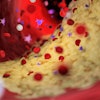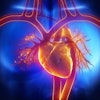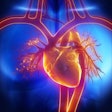BOSTON - Is virtual colonoscopy safe? Two new surveys covering nearly 40,000 patients on both sides of the Atlantic reveal that VC is substantially safer than colonoscopy, but not risk-free, according to presentations yesterday at the International Symposium on Virtual Colonoscopy.
The largest results to date on the incidence of VC complications also confirm, not surprisingly, that sicker patients suffer more adverse events than do healthy screening subjects, and that the exam technique probably makes a measurable difference in complication rates as well.
The two surveys may also underscore differences between two quite different healthcare settings -- the U.K.'s National Health Service (NHS), which cares for patients with more advanced colorectal disease and with greater use of technologists -- versus the Working Group on Virtual Colonoscopy, constituting several healthcare centers that screen higher numbers of asymptomatic patients.
The survey data reported on Monday does not meet the standards of peer-reviewed trial data, but it does offer insight into virtual colonoscopy as it is practiced in large numbers of patients in a wide variety of settings.
Bowel perforation is extremely rare in VC, which has been promoted as a noninvasive alternative to optical colonoscopy. But there is a degree of invasiveness, and therefore some risk, associated with the bowel prep and the colon insufflation required before the CT exam can begin.
Complications have been better studied in optical colonoscopy; symptomatic perforations have been reported to occur in approximately one in 1,000 patients, a figure that can easily double when procedures such as polypectomy are included in the exam statistics.
Still, virtual colonoscopy must meet a higher safety standard because it is used only for diagnosis. Patients with significant lesions detected on VC must still undergo subsequent colonoscopy, and subject themselves to all of its risks in addition to those of VC, to have their polyps removed.
Radiologists' interest in assessing the risk associated with cleansing and bowel insufflation in VC was piqued by a 2004 abstract by Dr. Jacob Sosna and colleagues from Hadassah Hebrew University Hospital in Jerusalem. In 2004 the group reported that two ill, symptomatic patients had required surgery due to perforations that occurred as a result of bowel insufflation (congress abstract: European Radiology 2005 (15) suppl. 3:16).
The team's 2004 RSNA abstract noted three cases of perforation (only the two mentioned previously, one in 3,590 patients, required surgery) among 7,180 VC exams, for an overall perforation rate of 0.04% (0.03%-0.05%; 95% CI).
The NHS experience
The presentations yesterday expanded on this study by examining the rates and causes of complications in virtual colonoscopy. First, Drs. David Burling, Steve Halligan, Stuart Taylor, and colleagues from St. Mark's Hospital in London surveyed 50 NHS hospitals in the U.K. that perform virtual colonoscopy regularly. Dr. Perry Pickhardt from the University of Wisconsin in Madison and his team from the multinational Working Group on Virtual Colonoscopy surveyed their 16 centers in the U.S. and four European countries not including the U.K. Both presented their results to symposium attendees on Monday.
Burling's group conducted a February 2005 telephone survey of the lead radiologists in the 50 centers and asked a series of questions about their practice and virtual colonoscopy techniques, including the number of exams performed and their use of balloon catheters and manual insufflation of room air, which may increase the risk of perforation.
The response rate was 100%. Out of 17,067 examinations in 50 centers, 13 complications (one in 1,313 patients, 0.08%) were reported. There were no deaths, three vasovagal reactions, and one episode of cardiac angina.
Nine luminal perforations were reported in six centers (one in 1,896 patients, 0.05%). Only four cases (0.03%) were symptomatic. The latter figure is more appropriate for comparison to optical colonoscopy, as asymptomatic perforations, typically seen on CT extraperitoneal gas bubbles, cannot be detected in optical colonoscopy.
The ninth patient didn't actually undergo virtual colonoscopy, Burling said, but felt unwell after the bowel prep, and plain films showed the perforation.
Of the eight patients who had a perforation in the course of VC, six had undergone insufflation with a balloon catheter. Two had automated insufflation of CO2; six had manual room-air insufflation. Four of these exams had been performed by nonradiology consultants.
In one perforation patient, "a radiology resident there had (inadvertently) done a CT colonography (VC) of a rectal stump, because the details of previous rectal surgery hadn't been communicated...." Another four exams had been performed by technologists, one of whom put a standard plastic catheter through the rectal wall, and one patient had active ulcerative colitis, "which I think many of us would consider as a contraindication to CT colonography," Burling said.
All but one patient was treated conservatively; the one patient had a laparotomy, but would have needed the procedure in any case to remove a sigmoid carcinoma, he said. All patients were alive and well, according to the interviewees.
There was no statistically significant difference in risk between research (n = 3) and nonresearch (n = 47) centers (p = 0.08), but there was a difference in the risk between patients who underwent insufflation with a balloon catheter (six perforations among 9,378 total balloon catheter exams) versus those who were intubated with other types of catheters (two perforations among 7,689 total exams performed with other catheters). No cases of perforation followed polypectomy or colonoscopy.
"The incidence of potentially serious adverse events in CT colonography in patients with symptoms of colorectal cancer was 0.08%," Burling said. "The incidence of symptomatic colon perforation associated with (VC) was 0.3%. Symptomatic perforation associated with CT colonography is four times less frequent than that published for colonoscopy in the same sort of environments. I think we can say that (VC) is relatively safe, and the perforation cases are potentially avoidable with knowledge of prior surgery and with the judicious use of balloon catheters."
Less risk outside the U.K.
Pickhardt presented results from a survey of the Working Group on Virtual Colonoscopy, comprising 16 medical centers in the U.S. and Europe (excluding the U.K.) that performed, between them, 21,923 VC studies over an eight-year period ending in October 2005.
Eleven were high-volume centers, having logged more than 1,000 exams apiece between 1997 and 2005, Pickhardt reported. Overall, 53.4% of the exams were for screening and 46.6% for diagnostic purposes.
"The perforation rates and overall complication rates have really not been well-established," he said. "We're starting to get some of that data ... and I think some of us are surprised by the higher complication rates that have been reported, even though they are relatively low."
The colon was manually insufflated with room air in 59.6% of the cases, with insufflation controlled by the patient in 12.7% of these. Automated CO2 was used in 40.4% of patients, and its use is rising rapidly, Pickhardt said. The researchers calculated the total number of significant complications, defined as anything potentially related to the virtual colonoscopy that required hospitalization. Monitoring of the exams by a physician varied widely.
Two colonic perforations were recorded among the 21,923 patients, both of which occurred in diagnostic VC exams employing manual room-air colon distension not controlled by the patient, Pickhardt said.
The first patient was asymptomatic after the perforation and did not require hospitalization; the diagnostic study was done for rectal bleeding.
"There were small bubbles of extraperitoneal gas noted in the pelvis ... and clearly would not be detected at colonoscopy because the patient developed no symptoms," Pickhardt said.
The second patient had known annual sigmoid carcinoma, like the first was symptomatic before VC, "and only had, by the report, two to three puffs of air administered and had massive pneumoperitoneum that may have been present before the two to three puffs, we don't know" he said. This patient was hospitalized, underwent colectomy, and a cecal perforation was found at surgery.
Three additional patients required hospitalization, including two with acute renal failure related to the bowel prep. One of these had obstructive bilateral hydronephrosis that was probably unknown at the time of VC. The other had a history of chronic renal failure and "somehow got through the net" to receive a VC exam that was clearly contraindicated. The last patient was admitted for chest pain, and myocardial infarction was ruled out.
The significant complication rate was 0.018% (4/21,923); the total perforation rate was 0.0091% (2/21,923); the symptomatic perforation rate was 0.0046% (1/21,923), and no perforations occurred in any screening exams, or exams administered with CO2, which now represents the majority of exams being performed by the working group, Pickhardt said.
"I think the safety profile for (VC) is extremely favorable based on the working group's experience," he said. "I think this is particularly true for the asymptomatic screening population, as well as for the automated CO2 delivery if done appropriately. I think we need to be aware of patients in acute renal failure -- certainly you want to screen for that -- as well as acute congestive heart failure."
Excluding patients with contraindications, as well as exam technique, are both important to ensuring safe exams, Pickhardt said.
By Eric Barnes
AuntMinnie.com staff writer
October 18, 2005
Related Reading
VC faces off (again) against second-look colonoscopy, October 4, 2004
VC fares better as its own gold standard, September 8, 2004
Copyright © 2005 AuntMinnie.com


















